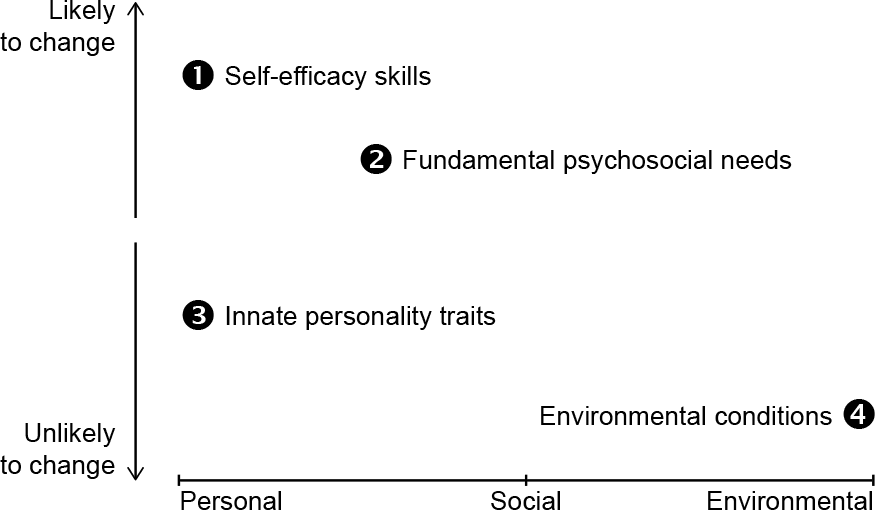
As the world becomes mired in increasingly inane and preposterous conspiracy theories, I thought it would be interesting to investigate the following research question in 2020: What predicts conspiracism in healthy adults of the general population in Western cultures and how do they think (reason) and behave? The result of my research was summarised in five diagrams. This is number five.
To help us conceptualise how we could change the belief in conspiracies, the four predictors of conspiracism (discussed in the other four posts in this series) can be mapped as above.
- Self-efficacy skills - learning to think critically, improving self-awareness, working through unfounded fears and introjected biases, etc - are the most likely to change as it involves primarily personal effort on the self.
- Fundamental psychosocial needs - social connection, belonging, external validation, etc - are harder to change as it often requires seeking out healthier alternative sources to fulfil these needs.
- Innate personality traits can also be hard to change. Some individuals may be hardwired to need something supernatural or some external power to believe in. They may, for example, leave organised religion to then sign up to crystals and energy healing. Learning new skills would not necessarily change such a drive.
- Environmental conditions are essentially unchangeable from an individual perspective. We cannot single-handedly prevent chaotic situations from arising.
Read the other posts in this series of five:
- Situational desires that predict conspiracism
- Individual conditions that predispose conspiracism
- Existing beliefs that predict conspiracism
- Cognitive styles that perpetuate conspiracism
- Conspiracism: likelihood and loci of change
This diagram came from a university structured literature review (done with peer-reviewed literature) I wrote in 2020.